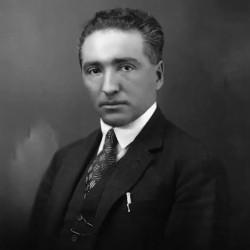
Wilhelm Reich
| Date of Birth | : | 24 Mar, 1897 |
| Date of Death | : | 03 Nov, 1957 |
| Place of Birth | : | Dobryanychi, Ukraine |
| Profession | : | Psychoanalyst, Psychiatrist |
| Nationality | : | American, Austrian |
Wilhelm Reich was an Austrian medical doctor and psychoanalyst, a member of the second generation of analysts after Sigmund Freud. The author of several influential books, The Impulsive Character (1925), The Function of the Orgasm (1927), Character Analysis (1933), and The Mass Psychology of Fascism (1933), he became one of the most radical figures in history of psychiatry.
Early life
Childhood
Reich was born the first of two sons to Leon Reich, a farmer, and his wife Cäcilie (née Roniger) in Dobzau, Galicia, then part of Austria-Hungary, now in Ukraine. Wilhelm Reich's parents were married by Rabbi Schmelkes on June 4, 1895. Baby Wilhelm was circumcised four days after his birth. There was a sister too, born one year after Reich, but she died in infancy. Shortly after his birth the family moved to Jujinetz, a village in Bukovina, where his father ran a cattle farm leased by his mother's uncle, Josef Blum.
Death of parents
Reich was taught at home until he was 12, when his mother was discovered having an affair with his live-in tutor. Reich wrote about the affair in 1920 in his first published paper, "Über einen Fall von Durchbruch der Inzestschranke" (German: "About a Case of Breaching the Incest Taboo"), presented in the third person as though about a patient. He wrote that he would follow his mother when she went to the tutor's bedroom at night, feeling ashamed and jealous, and wondering if they would kill him if they found out that he knew. He briefly thought of forcing her to have sex with him on the threat of telling his father. In the end, he did tell his father, and after a protracted period of beatings, his mother committed suicide on October 1, 1910, for which Reich blamed himself.
Personal life
According to Sharaf, 1934–1937 was the happiest period of Reich's personal life, despite the professional problems. His relationship with Elsa Lindenberg was good and he considered marrying her. When she became pregnant in 1935, they were initially overjoyed, buying clothes and furniture for the child, but doubts developed for Reich, who saw the future as too unsettled. To Lindenberg's great distress, Sharaf writes, Reich insisted on an abortion, at that time illegal. They went to Berlin, where the psychoanalyst Edith Jacobson helped to arrange it.
Death
Reich failed to appear for roll call on 3 November 1957, and was found at 7 a.m. in his bed. The prison doctor said he had died during the night of "myocardial insufficiency with sudden heart failure". He was buried in a vault at Orgonon that he had asked his caretaker to dig in 1955. He had left instructions that there was to be no religious ceremony, but that a record should be played of Schubert's "Ave Maria" sung by Marian Anderson, and that his granite headstone should read simply: "Wilhelm Reich, Born March 24, 1897, Died ... " None of the academic journals carried an obituary. Time magazine wrote on 18 November 1957:
Died. Wilhelm Reich, 60, once-famed psychoanalyst, associate and follower of Sigmund Freud, founder of the Wilhelm Reich Foundation, lately better known for unorthodox sex and energy theories; of a heart attack; in Lewisburg Federal Penitentiary, Pa; where he was serving a two-year term for distributing his invention, the "orgone energy accumulator" (in violation of the Food and Drug Act), a telephone-booth-size device that supposedly gathered energy from the atmosphere, and could cure, while the patient sat inside, common colds, cancer, and impotence.
